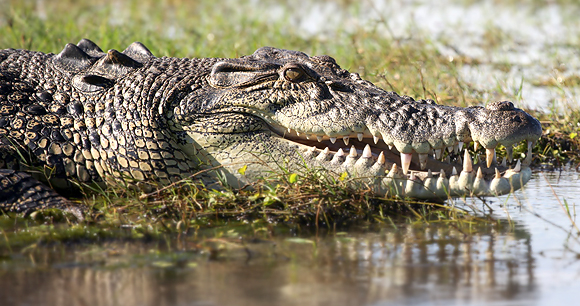
Approximately 15% of highly threatened mammals and birds have declined as a result of trade. Much of this trade is for luxury products, including clothes, jewelry, ornament, accessories, and trophies.
Snakes, crocodiles, lizards and frogs are harvested for their skins to be made into shoes, handbags and other exotic leather products. Some animal products such as ivory—used for ornaments, as decoration, in ornamental seals and traditional medicine—are as valuable as gold, threatening elephants and rhinos.
The fur trade has endangered many species and continues to use the skins of rare cats and canids for coats, hats and trim. Sea turtles—already imperiled by indiscriminate fisheries, pollution, habitat encroachment, and overharvesting for food—are also targeted for their shells to make jewelry and art objects. Trophy hunting of endangered species by wealthy hunters is a major threat to a growing number of animals, the more so since those killed are typically the largest and most genetically fit specimens.
Consumers purchasing goods of unknown origin unwittingly contribute to the decline of species. Often, the animal origins of the component parts are not easily discernable, as is the case with worked products such as jewelry.
The methods used to capture and kill animals for their hides and parts are often cruel. Steel-jaw leghold traps and wire snares, which cause great pain and injury, are used for many types of animals. Leg snares are placed on the ground, and the animal walks into the loop, which then springs and tightens on the leg. Sometimes the animal is caught by other parts of the body and dies slowly. Neck snares, set higher up on tree trunks, are intended to grab the animal by the neck and strangle it. In tropical countries, these snares have been responsible for the agonizing deaths of hundreds of thousands of targeted wild cats, antelope and primates, and perhaps an equal number of non-target animals. Elephants have blundered into neck snares and become entrapped by a leg—or even the trunk—and died slowly of infection after weeks of pain. These snares are non-selective, and present a major threat to virtually all mammals and many other types of animals, even in national parks.